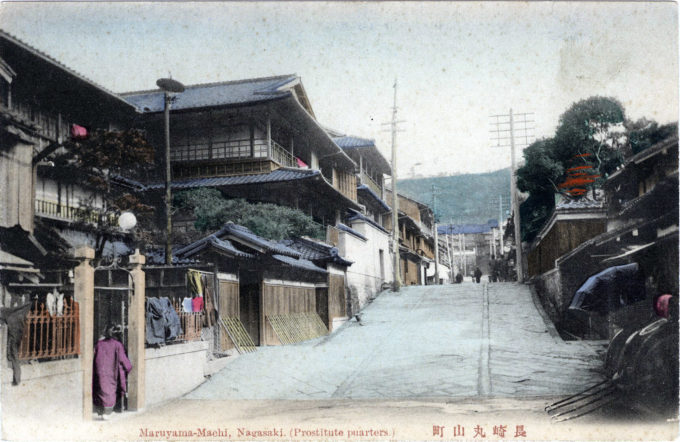See also:
Yoshiwara (Tokyo), c. 1910-1930.
Kamuro (attendant) at Yoshiwara, c. 1910.
“The licensed quarters called Maruyama-machi and Yoriai-machi were situated on the outskirts of the city of Nagasaki. The yukaku was enclosed by walls and escarpments and segregated from the rest of the city by double gates. Another gate at the rear of the quarter was called the ‘never-opened-gate’, akazu-no-mon.
“Maruyama-machi and Yoriai-machi were two the eighty machi, or wards, which comprised the city of Nagasaki … The local officials of the two wards maintained and supervised the streets and their residents and also represented the licensed quarter in dealings with the city authorities.
“According to statistics of the late eighteenth century, Maruyama-machi comprised 2,993 tsubo, or 0.9877 hectares, and contained 130 houses with a population of 522 (of which 159 were male and 363 were female).
“The average number of brothels in the district was between twenty and thirty during the eighteenth and nineteenth centuries, and the yujo who belonged to them numbered over 400 … In many cases, these girls and women were not completely cut off from their families, which is in striking contrast with the situation in other cities, in which girls were often sold by their parents with documentary proof of a transfer of ownership. In Nagasaki, many families chose to keep supporting their daughters and to rely on their earnings in perpetuity instead of transferring ownership of their daughter for a one-time advance payment.”
– Bonded Labour and Debt in the Indian Ocean World, edited by Gwyn Campbell & Alessandro Stanziani, 2015


